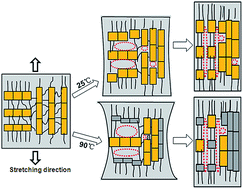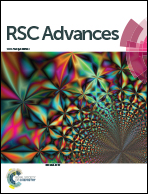Pore formation mechanism of β nucleated polypropylene stretched membranes
Abstract
In this article, two β nucleated polypropylene (β-iPP) precursor films were prepared at crystallization temperatures (Tc) of 110 °C and 135 °C. The differential scanning calorimetry (DSC), wide-angle X-ray diffraction (WAXD) and scanning electron microscopy (SEM) results reveal that the two samples, which were composed of bundle-like lamellae, had similar crystallinity and particularly high contents of the β-crystal. However, they behaved differently when stretched at 25 °C and 90 °C. Based on the detailed characterization of morphological evolutions during stretching by 2D-WAXD and SEM measurements, a mechanism of pore formation in stretching β-iPP is presented. We found that the phase transformation of β-smectic and β–α are not the primary origin of pore formation in stretching β-iPP, instead, the micropores are directly initiated from the substantially weak interfaces between β-lamellae. Since the bundle-like β-lamella without fully developed spherulites is an asymmetric three dimensional structure, the lamellae at different angles to the tensile axis would lead to various deformational modes during stretching. Therefore, it is the polydispersity of β-lamellae in β-iPP that causes the poor pore size distribution in stretching β-iPP membrane.


 Please wait while we load your content...
Please wait while we load your content...